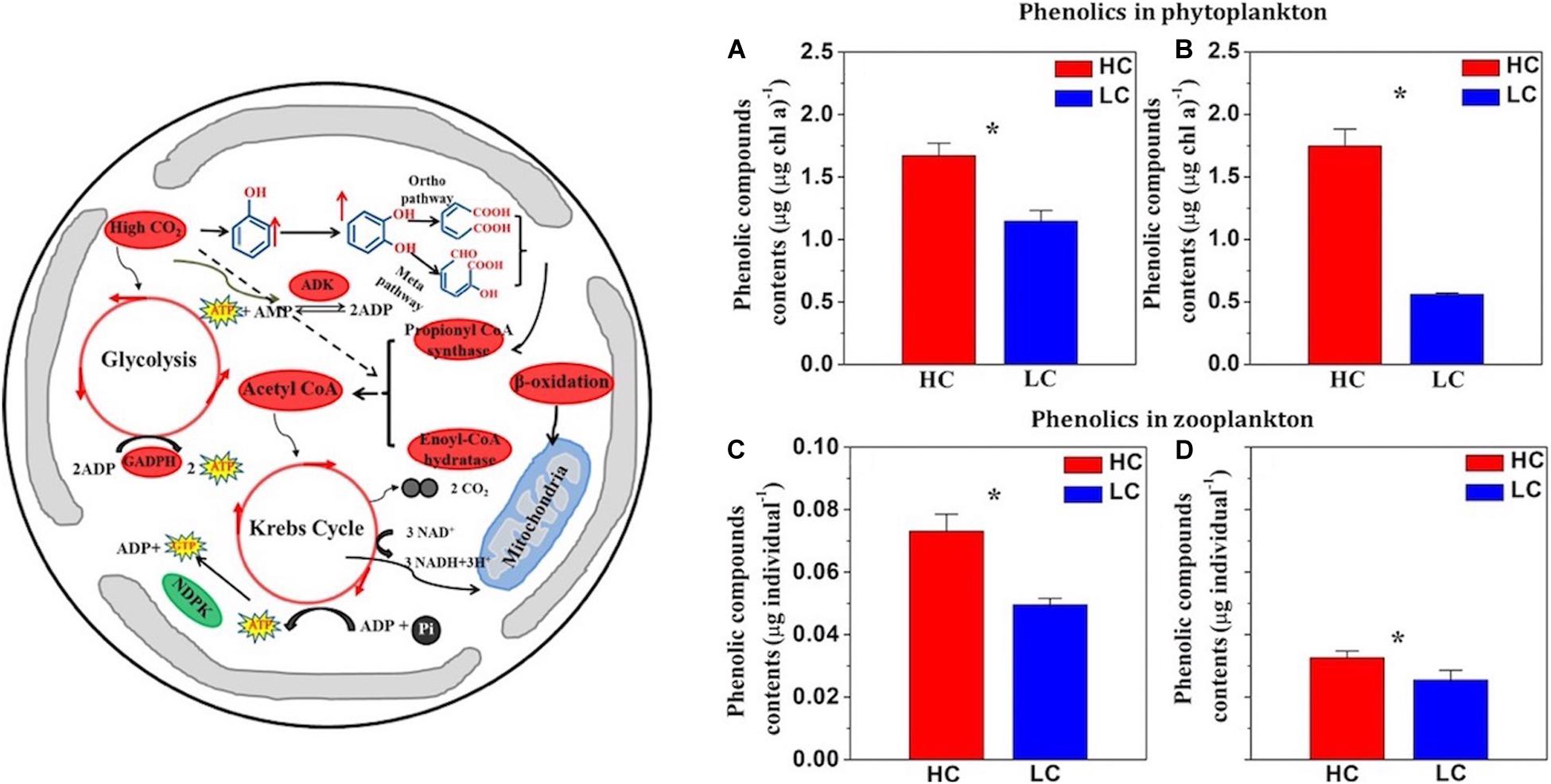PDF The Impacts of Ocean Acidification on Marine Food Quality and Its Biology Diagrams Our present understanding of ocean acidification (OA) impacts on marine organisms caused by rapidly rising atmospheric carbon dioxide (CO2) concentration is almost entirely limited to single species responses. Seaton D. Formation and transfer of fatty acids in an enclosed marine food chain comprising phytoplankton, zooplankton and herring Laboratory studies suggest changing ocean chemistry will 1) harm life forms that rely on carbonate-based shells and skeletons, 2) harm organisms sensitive to acidity and 3) harm organisms higher up the food chain that feed on these sensitive organisms. However, we do not yet know exactly how ecosystems will be impacted. As acidification impacts marine food chains, it could lead to reduced fishery yields, threatening food security and livelihoods. Long-Term Outlook Ecosystem Shifts: The ongoing acidification of the oceans is expected to cause shifts in species composition, with some species adapting or moving to new environments while others decline or disappear.

If acidification reduces the populations of small animals like clams, oysters, and sea urchins, the larger animals like fish that feed upon those could run short of food, and so on up the food chain. Since life in the ocean is always food for something else, any increase or decrease in the abundance of a species can have a ripple effect on This disruption at the base of the food chain can have far-reaching consequences for the entire marine ecosystem. Many species of fish, marine mammals, and seabirds depend on plankton as their primary food source. By collectively working towards lowering atmospheric CO2, we can help mitigate the effects of ocean acidification and safeguard

Effects of Ocean and Coastal Acidification on Marine Life Biology Diagrams
Dissolution of anthropogenic CO2 into the oceans results in ocean acidification (OA), altering marine chemistry with consequences for primary, secondary, and tertiary food web producers.

Dissolution of anthropogenic CO2 into the oceans results in ocean acidification (OA), altering marine chemistry with consequences for primary, secondary, and tertiary food web producers. Here we examine how OA could affect the food quality of primary producers and subsequent trophic transfer to second and tertiary producers. Changes in food quality induced by OA are often […] Introduction. The oceans have absorbed about one-third of the CO 2 released into the atmosphere by humans, altering marine carbonate chemistry with a continuous decline of pH, resulting in ocean acidification (OA) (Caldeira and Wickett, 2003).The pH of the surface ocean has dropped by ∼0.1 since pre-industrial times, which is a rate tenfold higher than in the past 300 million years (Hönisch

